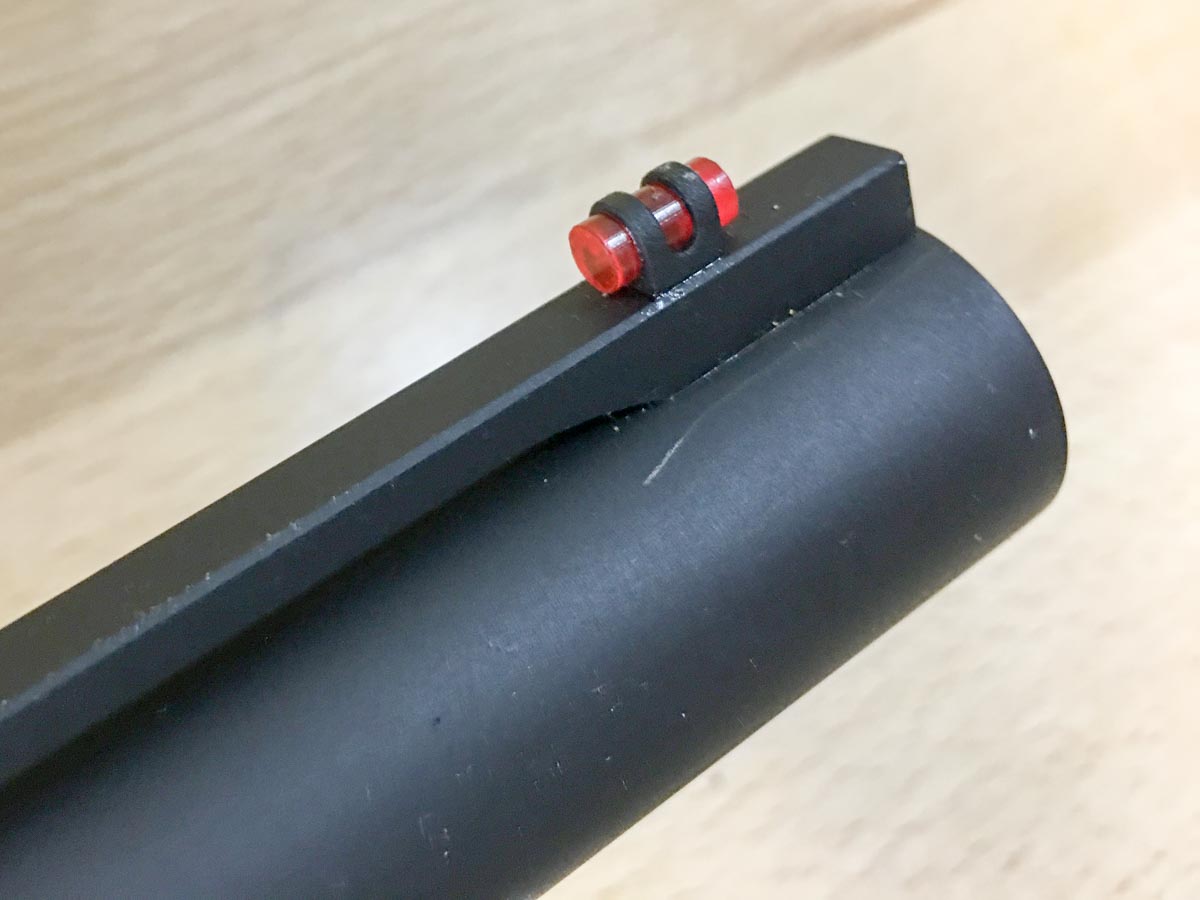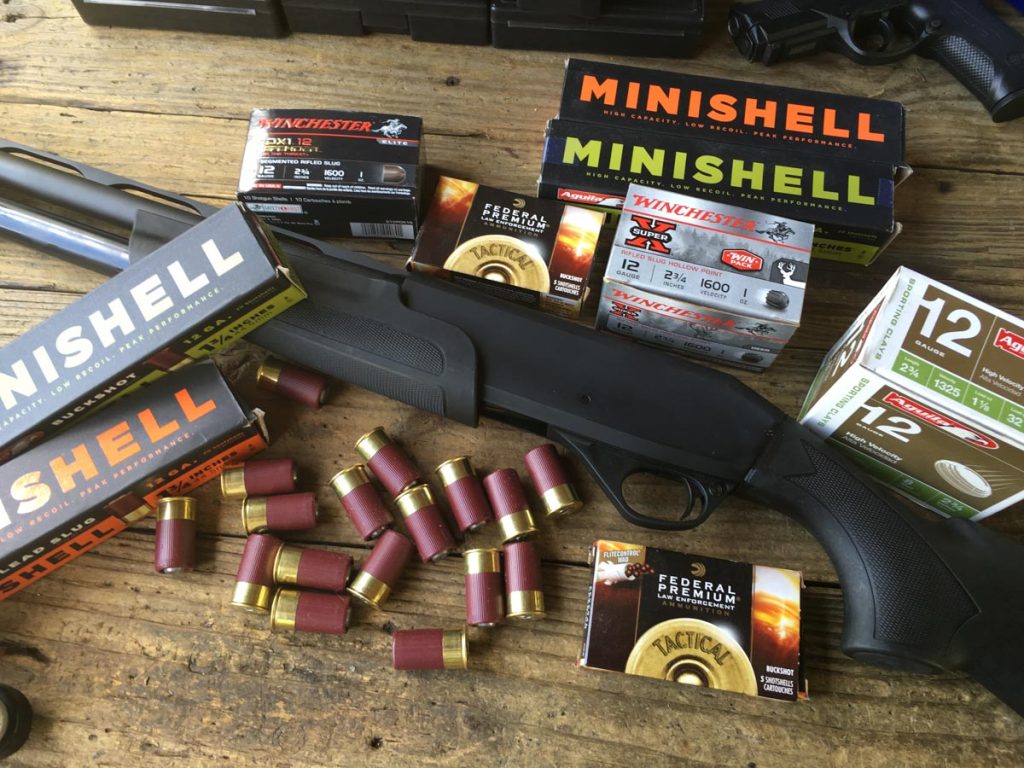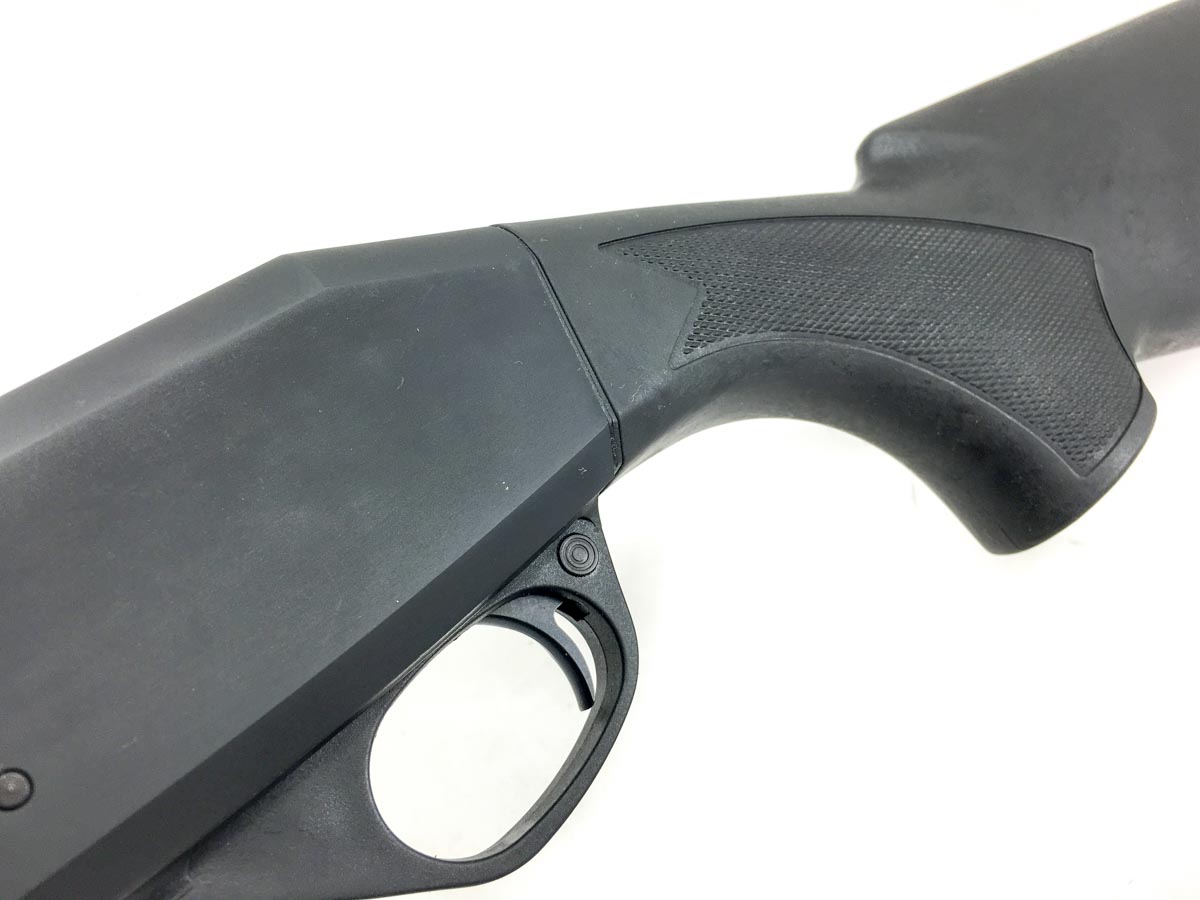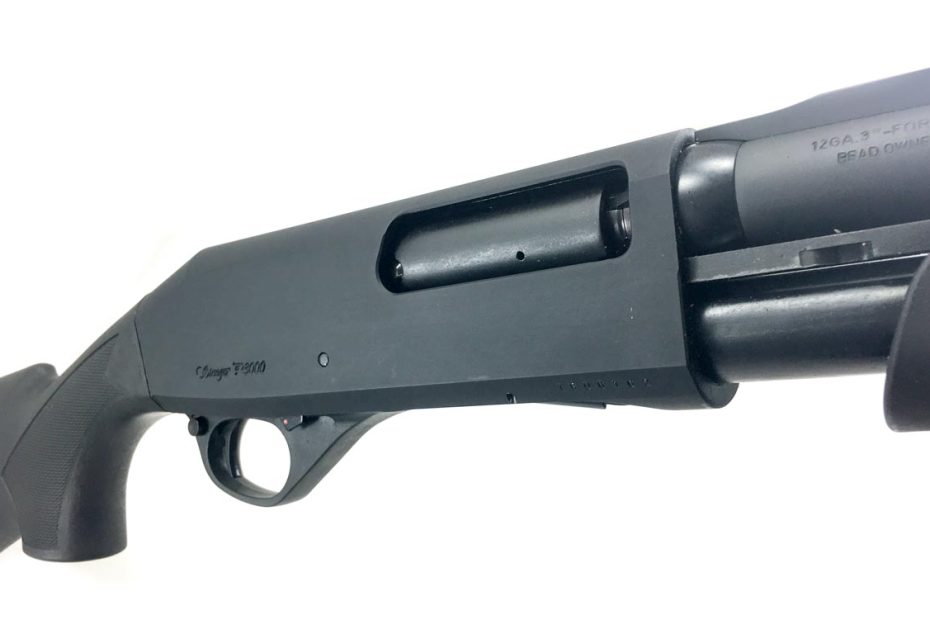
For more information, visit [track-link url=”https://www.stoegerindustries.com/p3000-pump-shotgun” campaign=”StoegerP3000″ target=”_blank”]Stoeger[/track-link].When I think of Stoeger, the picture that always comes to mind is that of the classic [track-link url=”https://www.stoegerindustries.com/coach-guns-single-and-double-trigger-shotguns” campaign=”StoegerP3000CoachGuns” target=”_blank”]Stoeger Coach Guns[/track-link]. I shot one of these at “rabbit” clay targets bounding across the Cody, Wyoming brush a few years ago at a Shooting Industry Masters event and was instantly hooked. A side-by-side design, the Coach models have short and compact 20-inch barrels, so they’re super handy and maneuverable. Recoil was “enlightening” but in some strange and masochistic way, that made the compact little buckshot launcher even more fun.
When I think of Stoeger, the picture that always comes to mind is that of the classic [track-link url=”https://www.stoegerindustries.com/coach-guns-single-and-double-trigger-shotguns” campaign=”StoegerP3000CoachGuns” target=”_blank”]Stoeger Coach Guns[/track-link]. I shot one of these at “rabbit” clay targets bounding across the Cody, Wyoming brush a few years ago at a Shooting Industry Masters event and was instantly hooked. A side-by-side design, the Coach models have short and compact 20-inch barrels, so they’re super handy and maneuverable. Recoil was “enlightening” but in some strange and masochistic way, that made the compact little buckshot launcher even more fun.

Once you get past the classic Coach gun, you’ll find that the Stoeger folks offer a variety of firearm types and styles and not just shotguns. As an example, one of their product lines includes the former Beretta 8000 semi-automat pistol. As a “child” of the Beretta family of companies, it’s not surprising that Beretta shipped all the original 8000 tooling to Turkey to allow Stoeger to continue production, but at a far lower price point. Over the decades, the Turks have figure out how to make quality guns at very compelling price points.
That brings us to the Stoeger [track-link url=”https://www.stoegerindustries.com/p3000-pump-shotgun” campaign=”StoegerP3000″ target=”_blank”]P3000 Pump-action Shotgun[/track-link]. This sleek looking gun sports a manufacturer’s suggested retail price of just $299. With that MSRP, you’ll be able to find one of the shelves for less than that. If you need a waterfowl, hunting slug gun, or home defense shotgun, and are constrained by budget, this is a great way to pick up a brand new one for less than 300 bucks.
SPECS
- Chambering: 12 Ga, 3″
- Barrel: 28 inches
- OA Length: 49.5 inches
- Weight: 6.9 pounds
- Stock: Synthetic
- Sights: Fiber-optic front
- Action: Pump
- Finish: Matte black
- Capacity: 4+1
- MSRP: $299
A Quick Look
The P3000 comes in your choice of stock material and finish, as long as you choose black polymer. Presumably, that’s one of the ways that Stoeger is keeping the price point so low. If you want more variety, you can check out the P350 line which offers different stocks, finishes, shapes and barrel lengths. To help keep production costs low and meet the price point goals, there’s exactly one variation of the P3000 shotgun, at least at this time.

The barrel is 28-inches long and tipped by a single red fiber optic front sight. While there is a full-length, medium-width rib, you won’t find a small bead halfway to the muzzle. You also won’t find little detail touches like fine serration in the rib surface to reduce glare. As the barrel and rib are flat black, that doesn’t matter anyway. This is a working gun, not a safe queen. I didn’t find glare to be a problem anyway.
[one_half]

[/one_half]
[one_half_last]

[/one_half_last]
The Stoeger P3000 sports a three-inch chamber in case you want to use magnum shells. While firing three-inch shells from a pump gun will wake you up in the morning, I suspect this magnum chambering choice is to support the desire to use less dense steel shot on large and stubborn waterfowl like Canada geese. The magazine tube is sized so that it will hold four 3-inch shells or four 2 ¾-inch shells – you’re not going to be able to jam an extra standard length shell in there. As a side note, the gun ships with a magazine plug installed which limits internal magazine tube capacity to two shotshells, making it “field legal” for hunting in many states. The plug takes seconds to remove. Just unscrew the magazine tube cap and it drops right out, bringing you to the four-plus-one capacity.

Just behind the trigger is a cross bolt safety. While the choice of a tang or cross bolt safety is largely one of personal preference, I like the location on this one. Using your trigger finger, just push from right to left to shift from safe to fire mode. You’ll see a red ring exposed when the safety is deactivated.
The barrel is threaded for choke tubes, but only a single improved cylinder choke tube is supplied. That’s just one of the ways the price point has been kept low. If you don’t need an assortment of tubes, you don’t have to pay for them in the initial purchase price. Just buy any additional choke tubes you need as you go.
[one_half]

[/one_half]
[one_half_last]

[/one_half_last]
With its 28-inch barrel, the P3000 measures 49.5 inches overall. The length of pull is 14 1/8-inches, drop at heel is 2 ½”, and drop at comb is 1 ½”. The stock is mounted to the receiver using a shim plate so additional plates can be ordered to adjust drop and cast dimensions. Again, in support of the low price point, no others are included in the box. If you want to adjust the stock to your exact fit, you can order a $29 set of four additional plates direct from Stoeger. The gun weighs in empty at 6.9 pounds.
Takedown
Breaking the P3000 down for cleaning and maintenance is a piece of cake, and I’m not using the phrase “piece of cake” casually. After ensuring the firearm is unloaded, just unscrew the magazine tube end cap and the barrel will effortlessly slide out of the receiver. Then you can slide the fore-end off over the front end of the magazine tube. The dual action bars remain attached to the fore-end and the entire bolt assembly slides right out. The bolt just rests on top of the dual action bars and as soon as it clears the receiver you can lift the bolt assembly off the action bars. At that point, you can continue to disassemble the bolt for detail cleaning if you like.
[one_half]

[/one_half]
[one_half_last]

[/one_half_last]
[one_half]

[/one_half]
[one_half_last]

[/one_half_last]
[one_half]

[/one_half]
[one_half_last]

[/one_half_last]
The trigger group pops out with the removal of a single cross pin in the receiver, then the trigger assembly drops out the bottom of the receiver.
[one_half]

[/one_half]
[one_half_last]

[/one_half_last]
The net-net is that the P3000 is one of the simplest shotguns to break down that I’ve seen. When the parts are so accessible, cleaning is a breeze. Not that you’ll have to worry too much about cleaning anyway. The pump-action guarantees that most of the grime goes right out the muzzle, and since reloading relies on your muscle rather than a finely-tuned semi-automatic action, it’s going to work even under adverse conditions. That’s the big benefit of the pump-action design in the first place.
Loading and Unloading
There are two ways to load the P3000. Regardless of the cocked / uncocked status, you can load shells into the magazine tube as long as the action is closed, or at least mostly closed. If the forend is too far back, it not only covers the ejection port but locks the shell lifter, blocking access to the magazine tube.
Once one or more shells are in the tube, you can simply cycle the pump action to load one from the magazine tube into the chamber. At this point, you are free to “top off” the magazine tube to full capacity.
[one_half]

[/one_half]
[one_half_last]

[/one_half_last]
The second method takes advantage of the side ejection port. With the action open, just drop a shell into the side port. As long as it’s facing generally forward, closing the action will chamber the shell reliably. At this point, you can load up the magazine tube to full capacity. Of course, make sure the cross bolt safety is engaged regardless of the method used. Also, as goes without saying, remember to watch the muzzle. Any time that shells are going in and out of chambers, there’s no such thing as too much caution.
To unload shells from the magazine, you can simply depress the action release locking lever and cycle the pump action repeatedly until each shell feeds into the chamber and then is ejected out.
[one_half]

[/one_half]
[one_half_last]

[/one_half_last]
If you prefer not to cycle shells in and out of the chamber just to empty the magazine tube, there’s a way to do that. With the safety on, just flip the shotgun over and depress the shell carrier up into the receiver body. You’ll now see a small shell latch lever on your left just behind the entrance of the magazine tube. Depress this to allow removal of a shell from the magazine tube. Repeat until the tube is empty.
Shooting
As I’m looking at this as a general purpose shotgun, I’ve taken it to the range with an unusually broad assortment of ammunition. So far, I’ve shot everything including high-velocity slugs, buckshot, clay target birdshot loads, and even some specialty ammo that I’ll get to in a minute.
I figured I’d be a big boy and face the pain head on, so I decided to launch some slugs down range first. I loaded up the P3000 with some [track-link url=”https://www.winchester.com/Products/shotshell-ammunition/Performance/Super-X-Shotshell/Pages/X12RS15.aspx” campaign=”StoegerP3000WinchesterSuperXSlug” target=”_blank”]Winchester Super-X Rifled hollow-point slugs[/track-link]. This particular load is stuffed with a one-ounce lead slug in a standard 2 ¾-inch shell. The rated velocity is a whopping 1,600 feet per second. To check those numbers out of the Stoeger P3000, I set up my Shooting Chrony Beta Master Chronograph 15 feet down range. After really hoping that point of impact and point of aim were fairly well aligned, I launched some slugs through the chrony screens. Thankfully, I didn’t blow my chronograph to bits because the P3000 delivered slugs right where I expected. I averaged out the recorded velocities and came up with an actual speed of 1,604 feet per second. In case you were wondering, this particular load, when fired from a pump-action shotgun, will thump ya good.

While we’re talking about recoil, the P3000 is set up to accept an optional recoil reducer in the buttstock. Just remove the recoil pad to expose the interior of the stock. The Stoeger recoil reduction device screws onto the exposed threads of the stock mounting bolt. Reattach the recoil pad and you’re ready to go. The recoil reducer lists for $49.95.
I didn’t have the recoil reducer, so I manned up and moved on to tactical buckshot loads. My all-time favorite shotgun load is the Federal Premium Tactical 00 8-pellet buckshot. It’s almost identical to the [track-link url=”https://www.federalpremium.com/products/details/shotshell.aspx?id=909″ campaign=”StoegerP3000FederalPersonalDefense00Buck” target=”_blank”]Federal Premium Personal Defense 9-pellet 00 buckshot load[/track-link], except for that one less BB. This particular load uses FliteControl wads to keep a tight, predictable pattern even when shooting from a pure cylinder bore. With most shotguns, you’ll keep all pellets on a standard silhouette targets at ranges approaching 50 yards. The P3000 comes with an improved cylinder choke, so I set up 12-inch square targets 25 yards down range to see how it would pattern with the tactical buckshot load. Not only was the point of impact right where I expected, all pellets easily stayed inside of an eight-inch square. That’s pretty impressive. While conceptually it sounds cool to have a shot pattern spraying all over the place, I would much rather my buckshot patterns be predictable and controlled. After all, when you pull the trigger, you’re responsible for each and every pellet. Considering that each 00 buck pellet is roughly equivalent to a .32 caliber bullet, it’s a big deal to know where they’re going.
[one_half]

[/one_half]
[one_half_last]

[/one_half_last]
Moving on down the abuse scale, I loaded up some Aguila clay target shells. This particular load is a 1 1/8 ounce load filled with #8 shot pellets. Rated velocity is 1,325 feet per second, so it’s no pussycat. The P3000 handled these beautifully, and they were pleasant to shoot.
Just for fun, I brought along a couple of varieties of [track-link url=”https://aguilaammo.com/shotshell/” campaign=”StoegerP3000AguilaMinishells” target=”_blank”]Aguila Minishell shotshells[/track-link]. At just 1 3/4-inches long, these are reduced recoil loads that are great for shorter-distance applications. The company offers Minishells in both slug and buckshot loads. I clocked the slugs during the same outing, and they averaged out to 1,151 feet per second when measured 15 feet from the muzzle. Recoil? Ha! There was basically none, just a little bit of noise.
[one_half]

[/one_half]
[one_half_last]

[/one_half_last]
Given the unusual size, I doubted that these would feed reliably in the P3000 with its loading chamber sized for three-inch shells, and they didn’t. That’s nothing on the gun, as these shells are really designed for break action shotguns. I just couldn’t resist trying them in single-shot mode. I suspect they might feed better from a gun with a 2 ¾-inch chamber, but that’s just an educated guess as most times the magazine tube would release two Minishells onto the lifter.
The net results of my shooting sessions have been positive. I’ve not any malfunctions, and the action is plenty smooth. I suspect the dual action bars go a long way to preventing any torque from interfering with smooth feeding and ejection.
Closing Arguments
How can you say anything wrong about a $299 MSRP shotgun that runs? If you need a general purpose pump shotgun for hunting, clays, and/or home defense, I don’t see how you can go wrong with this one. I actually appreciate the black polymer furniture on the P3000. It’s a working gun and built to take a little rough and tumble in the car, truck, or boat.
